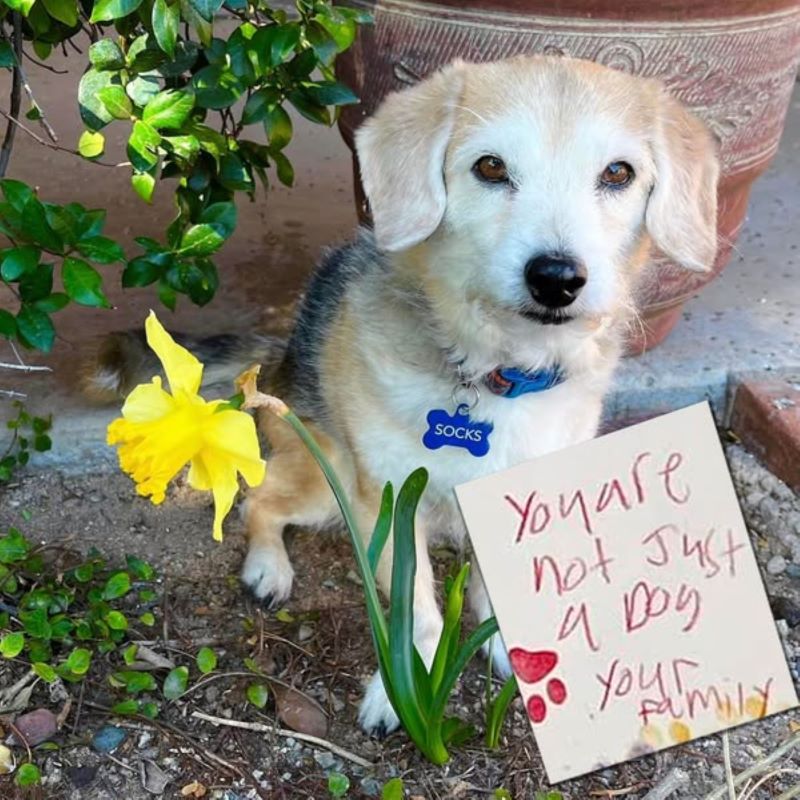A couple of issues back, we wrote about the incredible true story concerning the far-reaching journey of the Rainbow Bridge poem and one writer’s quest to track down the person who penned the touching ode. That was Tucson resident Dr. Paul Koudounaris, author, art historian, cat owner, and PACC foster caregiver, who was working on a book chronicling bereavement when he ran across it.
This got us thinking about an archeological dig we’d read about some five years ago and the practice of burying pets. In the late Victorian era — where it wasn’t unusual to see art depicting large dogs lovingly embraced as a part of the family unit hanging in homes — pet cemeteries began popping up in Europe and America.
London’s Hyde Park was the site of an informal pet cemetery between 1881 and 1903 in the gatekeeper’s garden. One headstone there reads, “In memory of our darling little Bobbit. When our lonely lives are over and our spirits from this Earth shall roam, we hope he’ll be there waiting to give us a welcome home.”
Cimetière des Chiens in Asnières-sur-Seine in Paris, which dates from 1899, is an elaborate pet cemetery touted as being the first public zoological necropolis in the modern world. Hollywood’s Rin Tin Tin is buried there.
Here in America, the largest and oldest pet cemetery sits on a hillside in Hartsdale, New York. Dating from 1896, a Manhattan veterinarian is said to have allowed a grieving pet owner the ability to bury their dog in his apple orchard. Today, it’s the final resting place for more than 70,000 animals! In 2012, the Hartsdale Pet Cemetery was listed on the National Register of Historic Places.
But dogs have been companions to humans for tens of thousands of years now. They are loyal creatures that have left indelible marks on our lives in so many ways. Archeologists have found them buried alongside their masters or laid at their feet in ancient tombs and burial plots around the world, demonstrating the special place they’ve held in our hearts for millennia.
In July of this year, a dig in Oxfordshire uncovered the 1,800-year-old remains of a tiny pooch buried at a villa believed to have been owned by a wealthy Roman family. Described as a lapdog, researchers say it is one of the smallest found in the U.K. and was likely a “much-loved pet” possibly interred with its people.
Another example is Scotland’s Peel Castle on the Isle of Man. Originally constructed in the 11th century by the Norse, it wasn’t until 1871 that it was excavated. During the work, they reportedly uncovered the remains of Simon, Bishop of Sodor and Man, who died between 1247 and 1249 A.D. At his feet was the skeleton of a very large dog.
And in the Neolithic or late stone-age village of Shillourokambos on Cyprus, the bones of a cat and a human were discovered in a grave dating from 7,000 – 7,500 B.C.
These are nothing compared to the earliest known case of a dog being interred with humans. To date, the record still stands with a grave that was unearthed in 1914 in Oberkassel, a suburb of Bonn in western Germany. Evidence showed that ancient people lovingly cared for a sick puppy for weeks before it died about 14,000 years ago during the Paleolithic era.
After its death, the small canine was buried with the remains of an adult male and female, as well as another dog. This case is said to be not only the oldest burial of a domestic dog on record, but the oldest known grave to include dogs with humans.
So, when did people start creating actual pet cemeteries?
In 2017, a group of Polish archeologists in Egypt working on a site along the Red Sea in the old Roman port town of Berenike (Ptolemaic-period 285-246 B.C.) came across a pet cemetery dating back 1,800 years to the 1st and 2nd centuries A.D. Within it, they located the skeletons of at least 100 pets.
In addition to cats and the skeletal remains of nine dogs, most of the animals were buried separately, but double graves with felines did occur on multiple occasions. In one grave, a vervet monkey and three felines were found buried together, along with their iron collars. While cats and dogs among the graves were to be expected, there were some unusual finds, too.
During the height of the Roman Empire, it was not uncommon for people to keep exotic animals as pets, so it wasn’t a complete surprise that at least four monkeys were buried in the cemetery. In addition to the vervet, they included grivets and an olive baboon.
The location of the graveyard came to light as the result of a larger excavation near the town within close proximity to the temple of Serapis. According to the journal Antiquity, the dig began in 1994. The site differs in the sense that the animals within its confines were not used as part of any ancient rituals — such as in the southern Levant or possibly Ashkelon — and is instead a strong testament to the lengthy bond between humans and pets.
One of the dig’s researchers, Marta Osypinska, wrote, “Egypt was undoubtedly one — and probably the most important — of the places where cats were first domesticated.” To honor these treasured pets, wealthy families dressed them in jewels and fed them like royalty. When they died, they were mummified. As a sign of mourning, the cat owners shaved off their eyebrows and continued to mourn them until they grew back.
How’s that for showing undying love and adoration?











